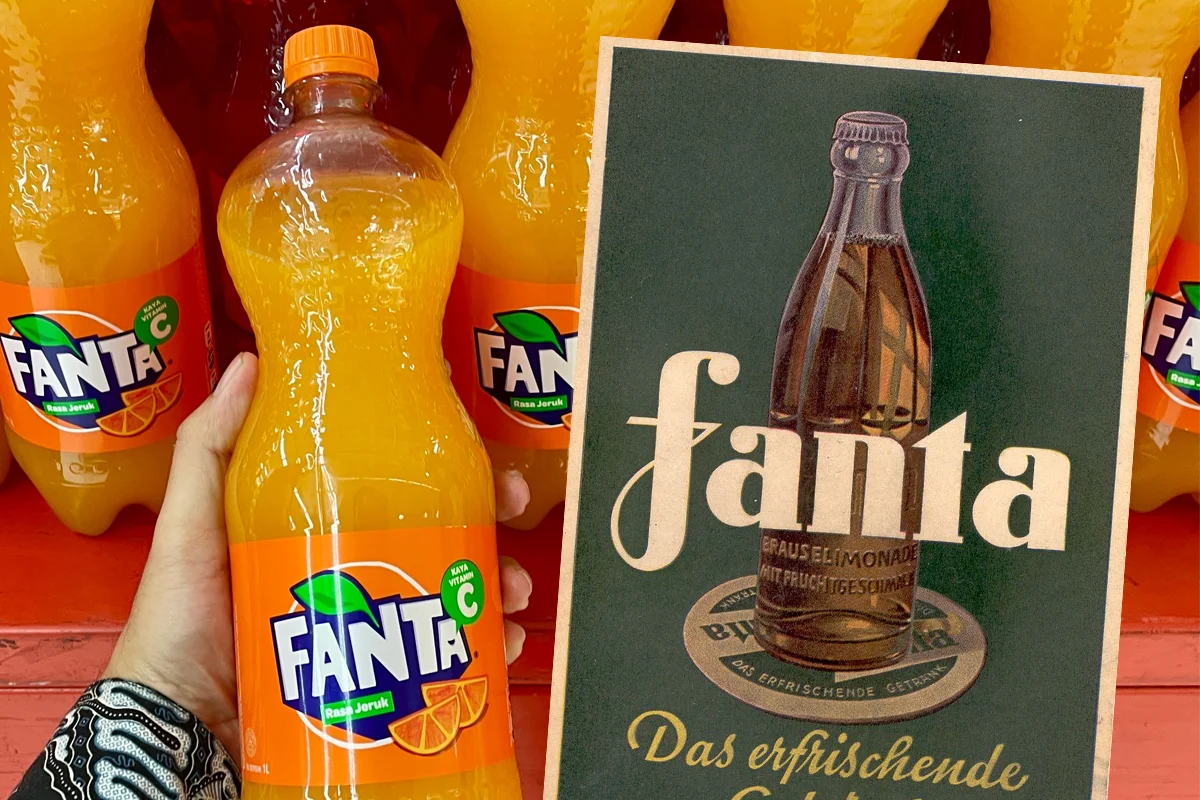Fanta is a popular fruit-flavoured carbonated soft drink “that makes all good times sparkle, with family and friends alike.” However, Fanta has an origin story that stems back to WWII in Nazi Germany.
Before the outbreak of World War II, Coca-Cola was on the rise, poised to dominate the consumer drinks market with an almost global distribution network.
In Germany, Coca-Cola was produced by Coca-Cola Deutschland (Coca-Cola GmbH), and had 43 bottling plants and more than 600 local distributors.
At the time, operations were overseen by American-born Ray Powers, but after a tragic automobile accident in 1938, Max Keith was appointed to manage Coca-Cola’s assets and properties in Germany.
The relationship between Max Keith and the Nazis is complex. According to HistoryAnswers, contemporary accounts from the 9th Annual Concessionaire Convention describe him as “bellowing his Nazi Party loyalty to the rafters.” The meeting concluded with a ceremonial pledge to Coca-Cola and a resounding three-fold “Sieg Heil” to Hitler.
However, many historians argue that Max Keith was simply navigating the difficult terrain set before him, rejecting membership to the Nazi Party, and acted only in the interests of Coca-Cola Deutschland.
Following Germany’s invasion of Poland in 1939, the United Kingdom and France declared war on Germany to honour a defensive pledge made to Poland. The United States imposed a trade embargo on Germany, while the British enforced a naval blockade to prevent the import of goods and assets.
In response, the Nazi Government blocked the assets of American Companies and integrated some of the American enterprises into the German war economy.
The embargo also prohibited the import of the Coca-Cola syrup, creating the need for a new drink to keep Coca-Cola Deutschland operational. Without this, the subsidiary, by then cut off from the Coca-Cola Company in America, faced the threat of nationalisation.
Max Keith looked to the “leftovers” of other food industries to formulate with, and chose to use whey (a cheese by-product) and apple pomace left over from cider presses.
The name for the new beverage came from a brainstorming session, when Max Keith encouraged his employees to let their Fantasie (the German word for “Fantasy”) run wild. In response, one of his salesmen, Joe Knipp, suggested, “Fanta!”
In 1943, 3 million cases of Fanta were sold in Germany. Due to severe sugar rationing, many bottles were not consumed as a beverage but were instead used as a cooking ingredient to add sweetness and flavour to soups and stews.
Following the defeat of Nazi Germany, communication was restored between the Coca-Cola Company and Coca-Cola Deutschland, allowing Fanta production to continue until it was dropped as a brand in 1949.
In the 1950s, Società Napoletana Imbottigliamento Bevande Gassate (SNIBEG) revived Fanta with a new formulation that incorporated locally sourced oranges. The Coca-Cola Company purchased the formulation, which is the basis for the Fanta formula used today.
In February 2015, a 75th-anniversary version of Fanta was released in Germany that was packaged in glass bottles evoking the original design and an authentic wartime flavour.
The release was met with controversy, as an ad campaign for the anniversary version said “75 years ago, resources for our beloved Coke in Germany were scarce” and that the anniversary version brought “the feeling of the Good Old Times back” – overlooking the horrific atrocities by Nazi Germany.
A Coca-Cola spokeswoman apologised for any offence caused by the advertisement and said that “Fanta was invented in Germany during the Second World War, but the 75-year-old brand had no association with Hitler or the Nazi Party.”





